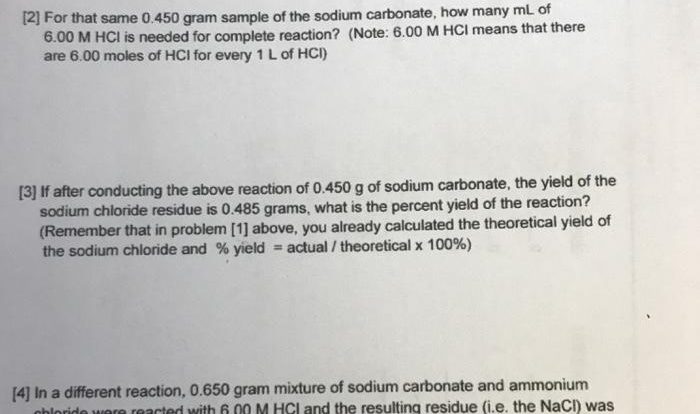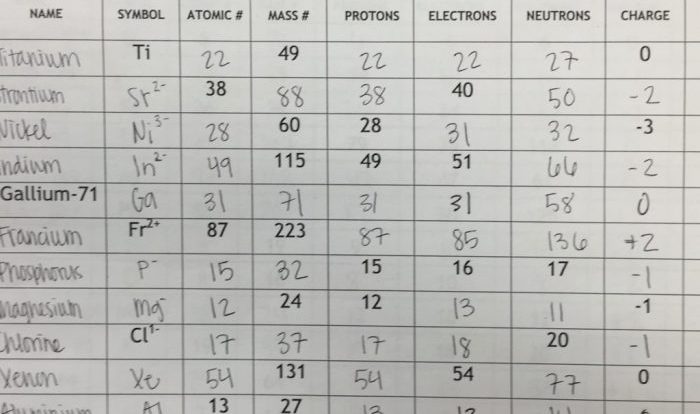Cracking the periodic table code – Embark on a captivating journey to crack the periodic table code, a timeless masterpiece of chemistry that has shaped our understanding of the elements and their interactions. From its humble beginnings to its modern-day applications, the periodic table holds a wealth of secrets waiting to be unraveled.
Join us as we delve into the fascinating history of the periodic table, tracing its evolution from early attempts to organize elements to the groundbreaking contributions of scientists like Mendeleev and Moseley. We’ll explore the intricate organization of the table, unraveling the patterns and periodic trends that govern the properties of elements.
History of the Periodic Table
The periodic table is a tabular arrangement of chemical elements, organized on the basis of their atomic number, electron configuration, and recurring chemical properties. It is generally accepted that the modern periodic table was first published by Dmitri Mendeleev in 1869, although several other scientists had developed similar tables prior to this.
Early Attempts at Classification
The earliest attempts to classify chemical elements were based on their physical and chemical properties. In the 18th century, Antoine Lavoisier classified elements into metals, non-metals, and gases. In the early 19th century, Johann Wolfgang Dobereiner proposed the law of triads, which stated that elements with similar properties could be grouped into sets of three.
Mendeleev’s Periodic Table
In 1869, Dmitri Mendeleev published his periodic table, which arranged the elements in order of their atomic weights. Mendeleev’s table was based on the idea that the properties of elements are periodic functions of their atomic weights. He left gaps in his table for elements that had not yet been discovered, and predicted the properties of these elements based on their position in the table.
Moseley’s Contribution
In 1913, Henry Moseley discovered that the atomic number of an element, rather than its atomic weight, is the fundamental property that determines its position in the periodic table. Moseley’s discovery led to a more accurate and complete periodic table, which is the basis of the modern periodic table we use today.
Organization of the Periodic Table
The periodic table is a tabular arrangement of chemical elements, organized based on their atomic number, electron configuration, and recurring chemical properties. It consists of 18 vertical columns, called groups, and 7 horizontal rows, called periods.
Groups
Groups, also known as families, are vertical columns in the periodic table. Elements within a group share similar chemical properties due to having the same number of valence electrons. For example, Group 1 elements (alkali metals) are all highly reactive and form 1+ ions.
Periods
Periods are horizontal rows in the periodic table. Elements within a period have the same number of electron shells. As you move from left to right across a period, the atomic number increases, and the elements become more non-metallic.
Blocks
Blocks are rectangular regions in the periodic table that correspond to the filling of different electron orbitals. The four blocks are:
- s-block: Elements in Groups 1 and 2
- p-block: Elements in Groups 13 to 18
- d-block: Elements in Groups 3 to 12
- f-block: Elements below the main body of the table
Periodic Trends
The periodic table displays elements in a manner that reveals patterns and trends in their properties. These trends are influenced by the atomic number, electron configuration, and atomic radius of the elements.
Some of the key periodic trends include:
Atomic Radius
Atomic radius refers to the distance from the nucleus to the outermost electron shell of an atom. As we move down a group (column) in the periodic table, the atomic radius increases. This is because each successive element has an additional energy level, resulting in a larger distance between the nucleus and the outermost electrons.
Conversely, moving across a period (row) from left to right, the atomic radius generally decreases. This is because the effective nuclear charge (the net positive charge experienced by the electrons) increases across a period, drawing the electrons closer to the nucleus.
Ionization Energy
Ionization energy is the energy required to remove an electron from an atom in its gaseous state. Ionization energy generally increases across a period from left to right and decreases down a group.
The increase in ionization energy across a period is due to the increasing effective nuclear charge, which makes it more difficult to remove an electron. The decrease in ionization energy down a group is due to the increase in atomic radius, which makes the electrons easier to remove.
Electronegativity, Cracking the periodic table code
Electronegativity is the ability of an atom to attract electrons towards itself in a chemical bond. Electronegativity generally increases across a period from left to right and decreases down a group.
The increase in electronegativity across a period is due to the increasing effective nuclear charge, which makes the nucleus more attractive to electrons. The decrease in electronegativity down a group is due to the increase in atomic radius, which makes the electrons less tightly bound to the nucleus.
Metallic Character
Metallic character refers to the tendency of an element to exhibit metallic properties, such as luster, malleability, and ductility. Metallic character generally decreases across a period from left to right and increases down a group.
The decrease in metallic character across a period is due to the increasing ionization energy, which makes it more difficult for the element to lose electrons and form positive ions. The increase in metallic character down a group is due to the increasing atomic radius, which makes the electrons more loosely bound to the nucleus and more easily lost.
Applications of the Periodic Table
The periodic table is a powerful tool that has revolutionized our understanding of the elements and their interactions. It is used in a wide variety of fields, including chemistry, physics, biology, and materials science.
In chemistry, the periodic table helps us to understand the chemical reactions that occur between elements. It can be used to predict the products of a reaction, as well as the rate at which the reaction will occur. The periodic table can also be used to design new materials with specific properties.
In Physics
In physics, the periodic table can be used to understand the electronic structure of atoms and molecules. It can also be used to predict the physical properties of materials, such as their electrical conductivity and thermal conductivity.
In Biology
In biology, the periodic table can be used to understand the role of elements in biological systems. For example, it can be used to identify the essential elements for life and to understand the mechanisms by which these elements are used in biological processes.
In Materials Science
In materials science, the periodic table can be used to design new materials with specific properties. For example, it can be used to design materials that are stronger, lighter, or more resistant to corrosion.
Advanced Concepts
Beyond the basic organization and trends of the periodic table, advanced concepts such as quantum mechanics and the electronic structure of atoms provide a deeper understanding of its predictive power.
Quantum mechanics explains the behavior of electrons in atoms, including their energy levels and orbitals. The electronic structure of an atom, which refers to the arrangement and properties of its electrons, determines its chemical properties and position on the periodic table.
Electronic Structure and the Periodic Table
The periodic table is organized based on the electronic structure of atoms. Elements in the same group (vertical column) have similar electron configurations, leading to similar chemical properties.
The number of electrons in an atom’s outermost energy level, known as the valence electrons, determines its chemical reactivity and placement within a period (horizontal row) on the periodic table.
Quantum Numbers and Atomic Orbitals
Quantum mechanics introduces the concept of quantum numbers, which describe the properties of electrons in atoms. These quantum numbers include the principal quantum number (n), angular momentum quantum number (l), magnetic quantum number (ml), and spin quantum number (ms).
Quantum numbers determine the shape, energy, and orientation of electron orbitals. The shape of an orbital, such as s, p, d, or f, corresponds to different values of the angular momentum quantum number (l).
Predictive Power of Quantum Mechanics
Quantum mechanics provides a theoretical framework for understanding and predicting the behavior of atoms and molecules. By considering the electronic structure and quantum properties of atoms, scientists can accurately predict chemical bonding, reactivity, and other properties.
This predictive power enables the development of new materials, pharmaceuticals, and technologies, as well as a deeper understanding of the fundamental building blocks of the universe.
Limitations of the Periodic Table
While the periodic table is an incredibly valuable tool for organizing and understanding the chemical elements, it does have certain limitations. These limitations stem from the fact that the periodic table is a simplified representation of a complex system, and as such, it cannot fully account for all the complexities of chemical behavior.
One of the most significant limitations of the periodic table is its inability to fully account for the behavior of the noble gases. The noble gases are a group of elements that are characterized by their extreme unreactivity. This unreactivity is due to the fact that the noble gases have a full valence shell of electrons, which makes them very stable.
The periodic table does not fully explain why the noble gases are so unreactive, and it cannot predict their behavior in all situations.
Another limitation of the periodic table is its inability to fully account for the behavior of the transition metals. The transition metals are a group of elements that are characterized by their ability to form multiple oxidation states. This ability to form multiple oxidation states is due to the fact that the transition metals have a partially filled d orbital.
The periodic table does not fully explain why the transition metals can form multiple oxidation states, and it cannot predict their behavior in all situations.
These limitations of the periodic table can be addressed through further research and advancements in chemistry. As our understanding of the chemical elements continues to grow, we will be able to develop more accurate and comprehensive models of their behavior.
These models will allow us to better understand the limitations of the periodic table and to use it more effectively to predict the behavior of the chemical elements.
Limitations of the Periodic Table
- Cannot fully account for the behavior of the noble gases
- Cannot fully account for the behavior of the transition metals
Future Directions
The periodic table continues to evolve as a valuable tool for understanding and predicting the properties of elements. Future research directions related to the periodic table include:
Computational modeling and simulations: Advanced computational techniques can provide insights into the electronic structure, bonding, and reactivity of elements and compounds, enabling the prediction of new materials and properties.
Expanding the periodic table
The discovery of new elements beyond the current 118 known elements is a possibility, potentially leading to the extension of the periodic table and the identification of novel properties and applications.
Quantum computing
Quantum computing has the potential to revolutionize the study of the periodic table by enabling the simulation of complex electronic structures and chemical reactions, providing deeper insights into the fundamental nature of elements.
Interdisciplinary applications
The periodic table finds increasing use in interdisciplinary fields such as materials science, biotechnology, and environmental chemistry, leading to the development of new materials, drugs, and technologies.
Sustainability and green chemistry
The periodic table can guide the design of sustainable materials and processes, promoting the use of abundant and non-toxic elements while minimizing environmental impact.
FAQ Explained: Cracking The Periodic Table Code
What is the significance of the periodic table?
The periodic table is a systematic arrangement of elements based on their atomic number, electron configuration, and periodic trends. It provides a wealth of information about the properties and behavior of elements, enabling scientists to predict their reactivity, bonding patterns, and chemical interactions.
Who is credited with developing the modern periodic table?
The modern periodic table is largely attributed to the work of Russian chemist Dmitri Mendeleev in 1869. Mendeleev arranged the elements in a table based on their atomic weights and chemical properties, leaving gaps for undiscovered elements that he predicted based on the patterns he observed.
What are the limitations of the periodic table?
While the periodic table is a powerful tool, it has certain limitations. It cannot fully account for the behavior of certain elements, such as the noble gases and transition metals, which exhibit unique properties that deviate from the general trends observed in the table.



